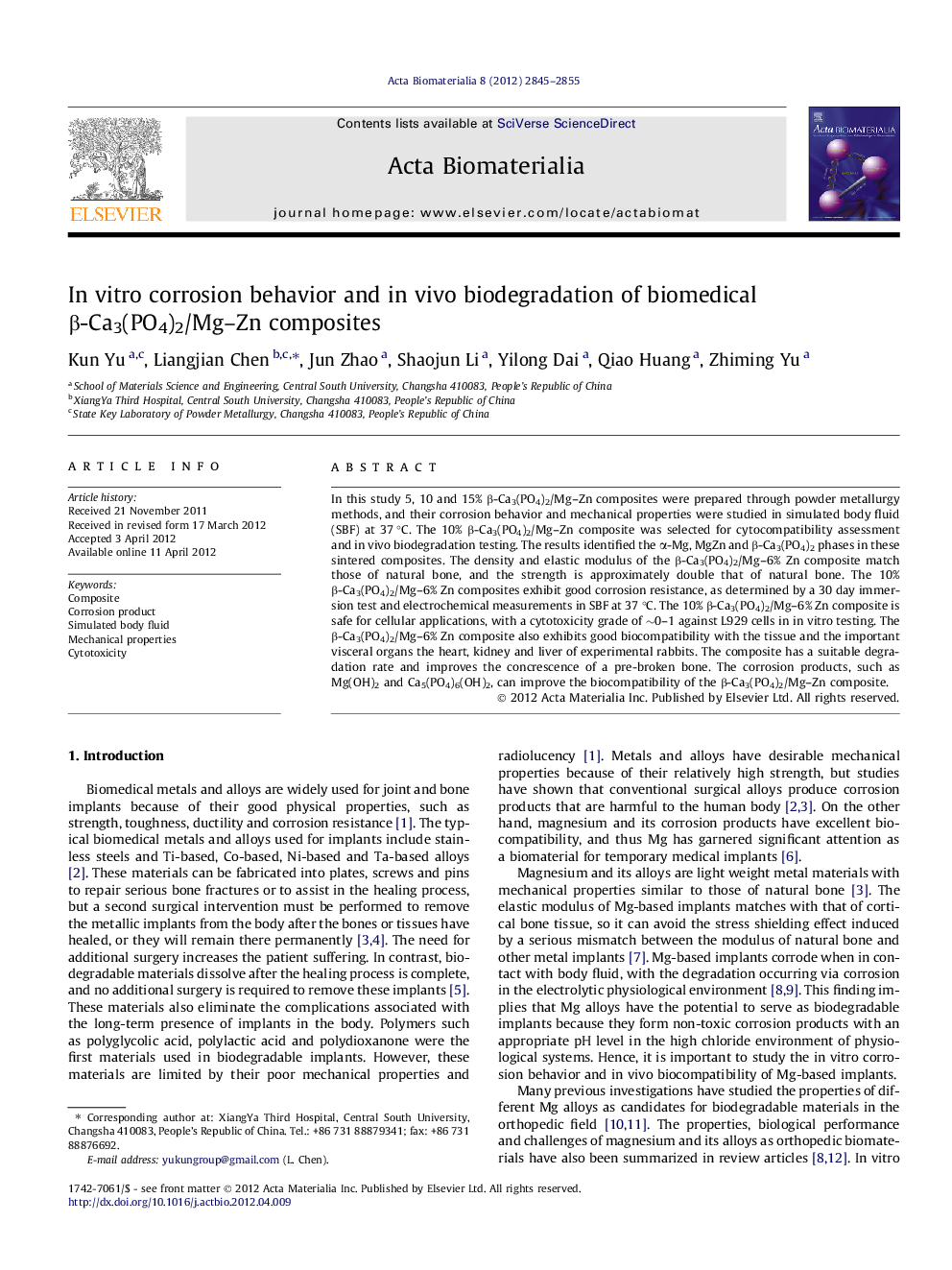| Article ID | Journal | Published Year | Pages | File Type |
|---|---|---|---|---|
| 10159709 | Acta Biomaterialia | 2012 | 11 Pages |
Abstract
In this study 5, 10 and 15% β-Ca3(PO4)2/Mg-Zn composites were prepared through powder metallurgy methods, and their corrosion behavior and mechanical properties were studied in simulated body fluid (SBF) at 37 °C. The 10% β-Ca3(PO4)2/Mg-Zn composite was selected for cytocompatibility assessment and in vivo biodegradation testing. The results identified the α-Mg, MgZn and β-Ca3(PO4)2 phases in these sintered composites. The density and elastic modulus of the β-Ca3(PO4)2/Mg-6% Zn composite match those of natural bone, and the strength is approximately double that of natural bone. The 10% β-Ca3(PO4)2/Mg-6% Zn composites exhibit good corrosion resistance, as determined by a 30 day immersion test and electrochemical measurements in SBF at 37 °C. The 10% β-Ca3(PO4)2/Mg-6% Zn composite is safe for cellular applications, with a cytotoxicity grade of â¼0-1 against L929 cells in in vitro testing. The β-Ca3(PO4)2/Mg-6% Zn composite also exhibits good biocompatibility with the tissue and the important visceral organs the heart, kidney and liver of experimental rabbits. The composite has a suitable degradation rate and improves the concrescence of a pre-broken bone. The corrosion products, such as Mg(OH)2 and Ca5(PO4)6(OH)2, can improve the biocompatibility of the β-Ca3(PO4)2/Mg-Zn composite.
Related Topics
Physical Sciences and Engineering
Chemical Engineering
Bioengineering
Authors
Kun Yu, Liangjian Chen, Jun Zhao, Shaojun Li, Yilong Dai, Qiao Huang, Zhiming Yu,
